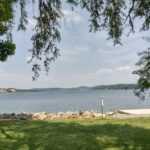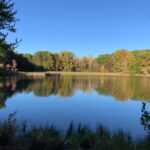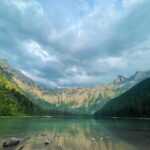Ponce De Leon Springs State Park
Key Information
Contact Info
850-836-4281
Location
2860 Ponce De Leon Springs Rd, Ponce De Leon, FL 32455, United States
Opening Hours
8am–5pm
Fee
$4 per vehicle (up to eight people). Please use the honor box to pay fees. Correct change is required.
$2 pedestrians, bicyclists, extra passengers, passengers in vehicle with holder of Annual Individual Entrance Pass.
Introduction of Ponce De Leon Springs State Park
Juan Ponce de León, who supposedly led the first Spanish voyage to Florida in quest of the fountain of youth in 1513, is honoured by having this lovely spring bear his name.
The water temperature of Ponce de Leon Springs is always 68 degrees Fahrenheit. A confluence of two subterranean water flows, the main spring generates 14 million gallons of water per day.
Two self-guided nature trails allow visitors to enjoy a leisurely stroll while learning about the local ecology and fauna in a beautiful, hardwood forest. Additionally, rangers lead seasonal guided hikes.
In the park, picnicking is a well-liked pastime; grills and pavilions are provided. Catfish, largemouth bass, chain pickerel, and panfish are among the fish that anglers can catch.
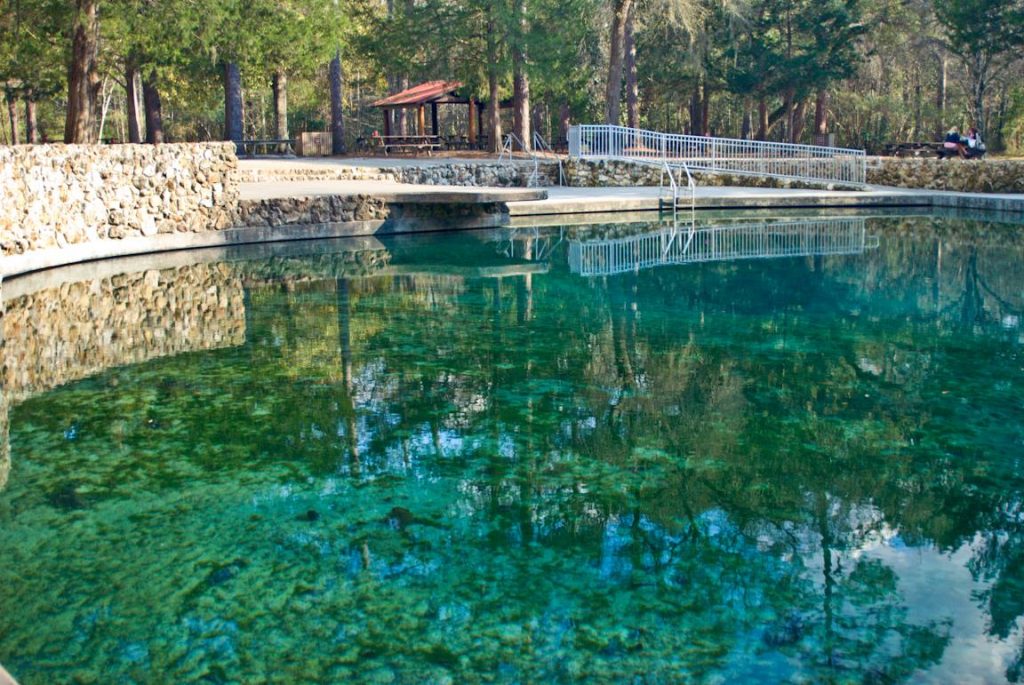
Ponce De Leon Springs State Park Activities
Fishing
In locations not designated for swimming, fishing is allowed. Whether not, cast your line in and keep an eye on your cork to see if your efforts result in catfish, largemouth bass, chain pickerel, or panfish captures. If you pay great attention, you can see the fish approaching the bait.
Regulations regarding size, number, mode of catch, and season must be followed for all fishing inside the park.
Perhaps a fishing licence is necessary.
Hiking
Take a stroll along the park’s Sandy Creek and Spring Run pathways.
You’ll pass through a luxuriant hardwood forest on each path, which offers the best vantage spots for seeing animals along the 350-foot spring flow and Sandy Creek.
Take a leisurely stroll through an assortment of natural plant and animal habitats while taking in the calming sounds of a running stream or the chatter of the birds.
Although there are also self-guided tours available, rangers provide seasonal guided hikes.
Picnicking
It is time for lunch after you have worked up an appetite exploring the natural pathways and swimming about in the cool spring water. Facilities for guests have been added on about 20 acres.
For anybody who wants to pop in for a quick picnic lunch or spend the day swimming and relaxing in the park, there are several picnic tables on the grounds and four picnic shelters with grills that may be reserved. For that particular picnic, your grill is also welcome.
Alcoholic beverage consumption is not permitted.
Water Sports
Take a plunge at Ponce De Leon Springs’ cold, clear water during those warm summer days to rejuvenate yourself. The water there is always 68 degrees F. In some locations, snorkelling is furthermore possible. The water will undoubtedly energise even if you don’t become any younger. For your comfort, the park provides a sizable toilet facility with changing areas.
Birding
One of the best places to see migratory animals is Ponce de Leon Springs. Wintering birds, particularly those at the southernmost end of their range, are the park’s greatest strength.
The likelihood of seeing birds like the brown creeper and golden-crowned kinglet increases with your ability to recognise birds by sound.
Hike the two short paths, Spring Run and Sandy Creek, pausing frequently to listen in the hardwood forest’s shade.
In warm weather, this park might be crowded with swimmers, so birding on weekdays and early in the morning can be most fruitful.
Snorkeling
Viewing the vibrant and intriguing environment just below the surface when snorkelling is enjoyable and soothing. The obstacles we face in daily life can be overcome just by floating and taking in the undersea beauty.
It is possible to snorkel in authorised places.
Swimming
The water temperature at Ponce De Leon Springs is a consistent 68 degrees all year long, making it the perfect place to cool down on those warm summer days.
A confluence of two subterranean water flows, the main spring generates 14 million gallons of water per day. Although the water won’t make you any younger, it will undoubtedly energise.
For your comfort, the park provides a sizable toilet facility with changing areas.
Wildlife Viewing
One of the best places to see migratory animals is Ponce de Leon Springs. Wintering birds, especially those at the southernmost end of their range, are this park’s great strength. The likelihood of seeing birds like the brown creeper and golden-crowned kinglet increases with your ability to recognise birds by sound.
Hike the two short paths, Spring Run and Sandy Creek, pausing frequently to listen in the hardwood forest’s shade.
In warm weather, this park might be crowded with swimmers, so birding on weekdays and early in the morning can be most fruitful.
Ponce De Leon Springs State Park History
Ponce de Leon Springs was used by Native Americans and early European immigrants as a source of drinking water and pleasure.
The two main businesses in and around the region were the collection of wood and turpentine. The magnificent longleaf pines made the Florida Panhandle railroad, as well as homes, shops, and other structures, possible.
In the middle of the 1920s, the Smithgall family owned the spring. A restaurant, a skating rink, and several other facilities were built to the property. To stop erosion, the Smithgalls also built a wooden retaining wall around the spring.
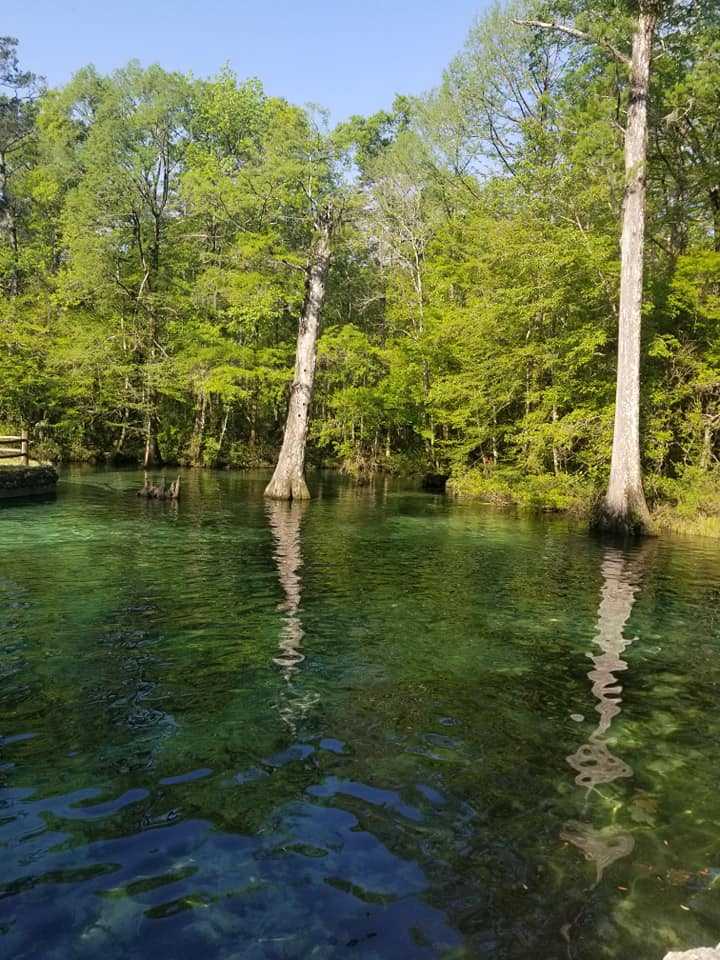
The Spring of 1925
The spring that bears Juan Ponce de Leon’s name is not the genuine fountain of youth that he was hoping to find when he arrived in Florida in 1513, but it has been a welcome diversion for many travellers over the years.
The Smithgall family contributed to the development of Ponce de Leon Springs as a leisure area. To stop erosion, they built a retaining wall around the spring and added a bathhouse, restaurant, and skating rink. A peaceful swim in the spring is still possible despite the loss of the ice rink, restaurant, and changing bathing trends.
Catface, 1937
In the early 20th century, the primary businesses in this region of Florida were the harvesting of lumber and turpentine. Building houses, shops, and the railroad that crossed the Florida Panhandle required the perfect kind of wood, which could be found in the beautiful longleaf pine.
Deep grooves are carved into the pine tree’s bark during the process of “turpentining,” which makes the tree drip resin. The resin was used to create a variety of products, including paint, ink, glue, and medications.
Transportation
Driving
On C.R. 181-A, Ponce de Leon Springs State Park Area is situated 0.5 miles south of U.S. 90.
Parking
Parking is available.
Public Transport
Public Transport is available.

